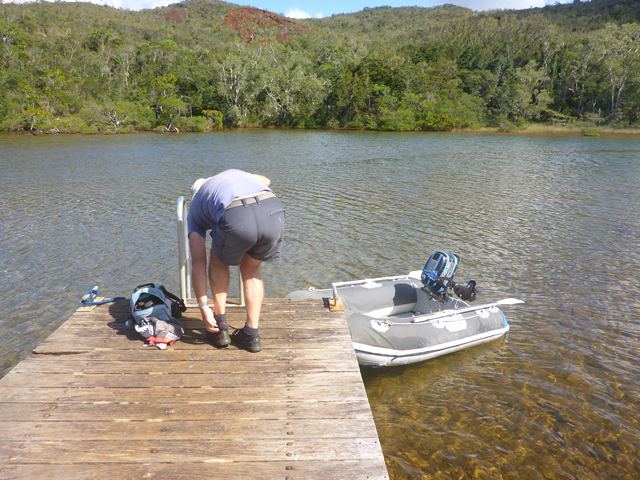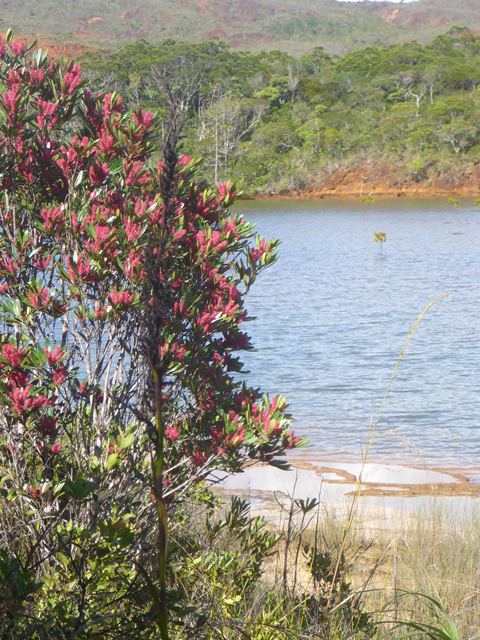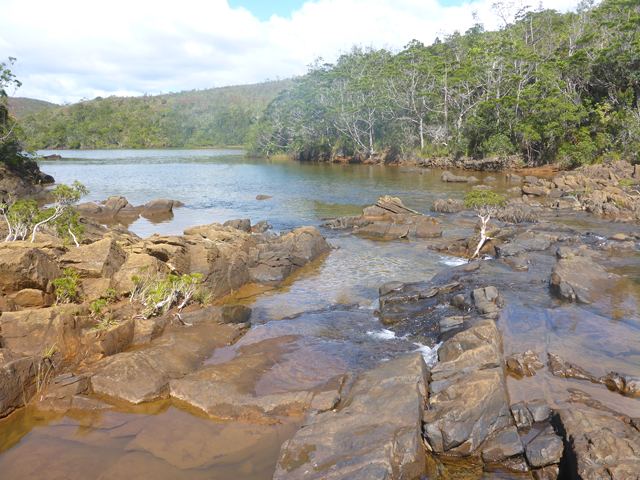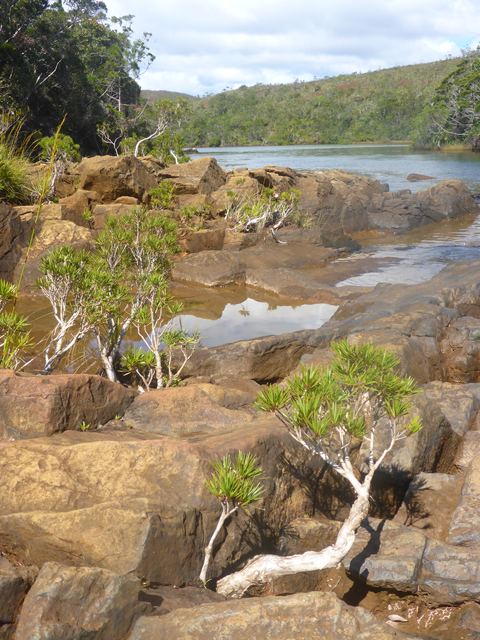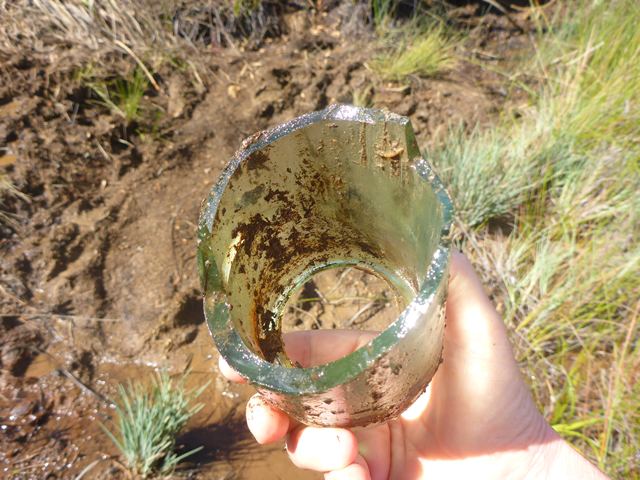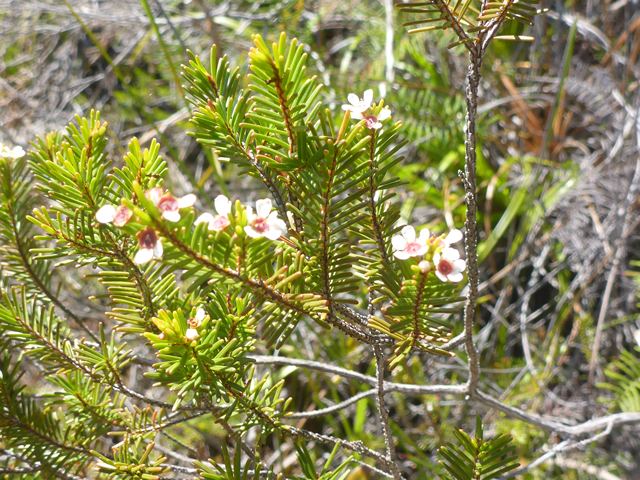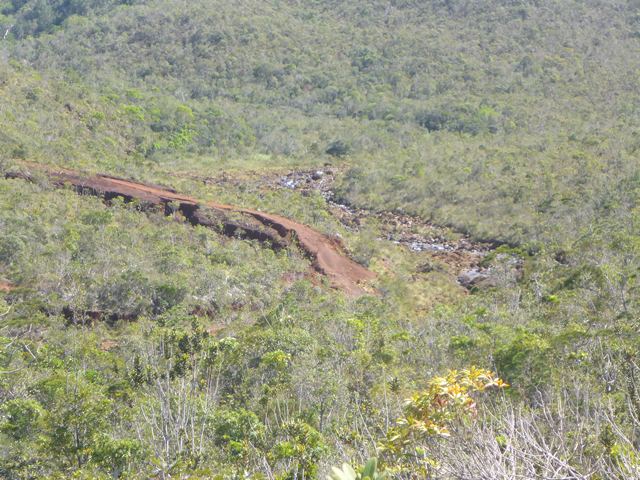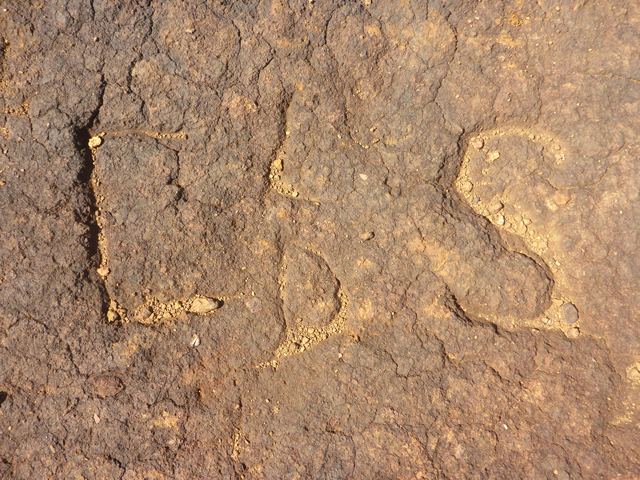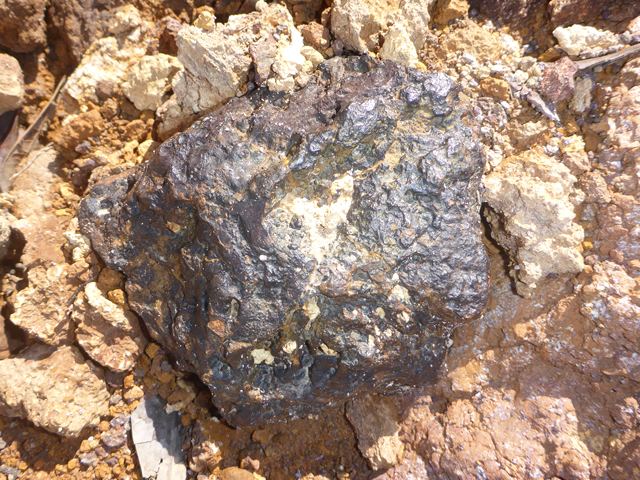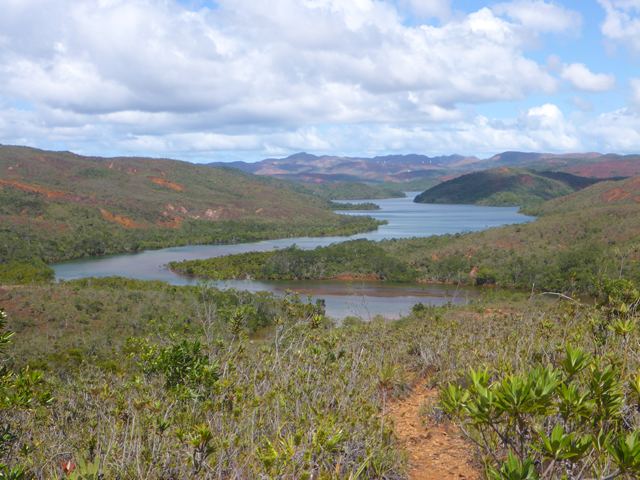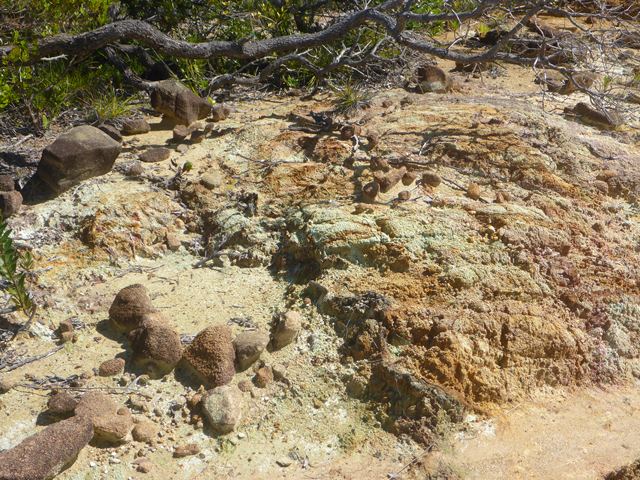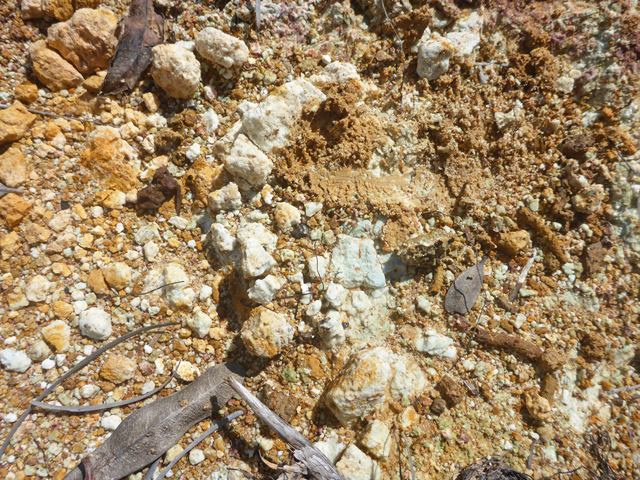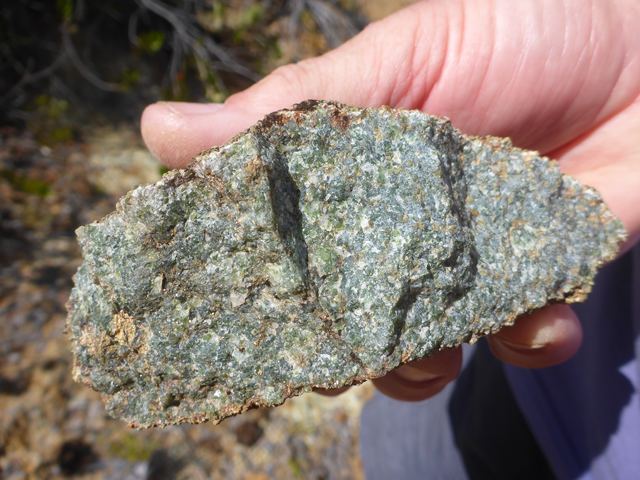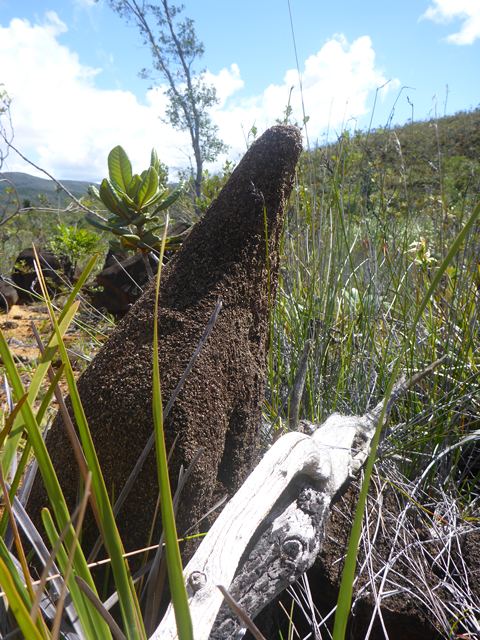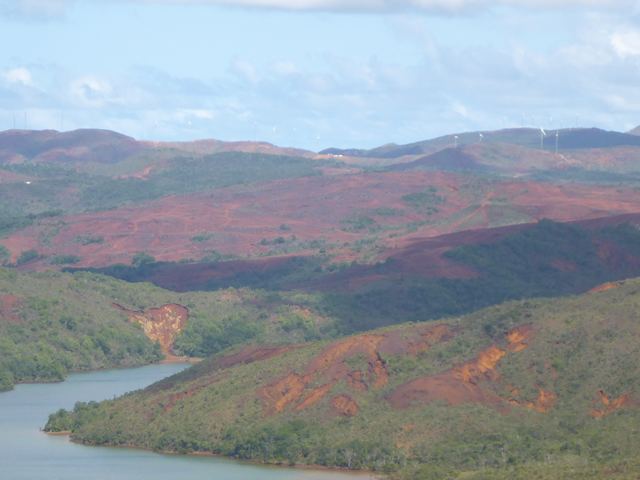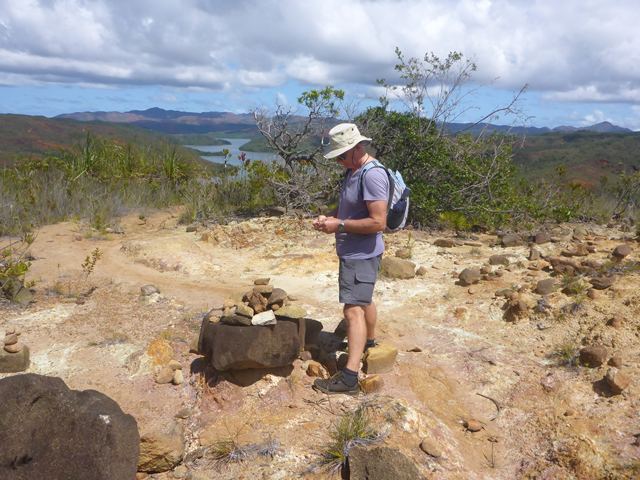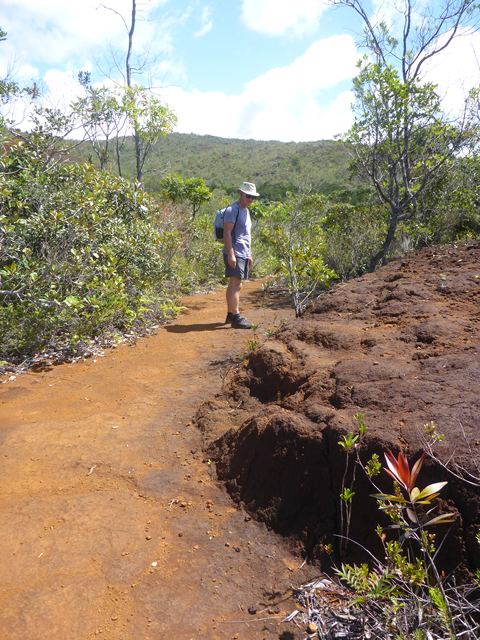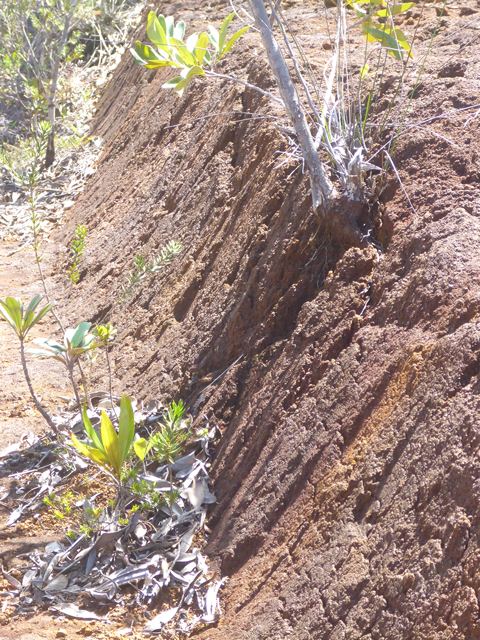A Walk on the Mine Side

|
A Walk on the Mine Side Our walking shoes now tied firmly on we were ready for a planned one and a half hour out and the same time back trek along one of the many excellent walking tracks in the area. It started with a shady welcome where the thermal spring has been tamed within a recently restored square concrete poole with wooden slatted seats in it and picnic tables around, a perfect spot to cool off and relax in the warm waters before returning to one’s boat or vehicle. Two friendly lads from Lifou in a beat up old un-named cruising boat on their way to Noumea for a lift out and stopping briefly in our anchorage would disappear up this was in their tender and I hope it was to enjoy these welcoming waters. For us, we didn’t have a towel. The trail is part of the Sentier de grand Randonee, Long Distance Hike Path and soon we came to a river, one of two that combined and flowed into the Bay and from there we started our ascent through the scrubland, a geologists dream. The camera hardly does justice to the range of bold and pastel colours that abounded at our feet. Hard dark rocks and soft green/white putty like seams (Alumina or Bauxite Maybe) that we could not understand. Dots of blue algae polka dots against the red rust of the rock and the odd black rock in weird wind eroded shapes. The most obvious places for mines were on top of the hills where after the de-forestation of earlier times, the soil layer would have eroded away, as you can see in the panoramic (504) which shows the extent of the damaging mining practices, leaving the rock ready to be extracted. Some notice boards emphasise that the erosion one can see over the countryside, gulleys and on the paths is natural as well as human made, but you can clearly see where it was helped to a great extent by the human activity. The mine we found showed the working in to the rock from the outer edges of the hilltop leaving a level, smooth area of ground with some initials carved for posterity. Maybe just those of a visitor or of the claim owner perhaps. Imagine the sound of pickaxes, adzes and crowbars, metal coming down onto metallic rock, some wielded by older boys helping their parents while the younger ones cleared the rubble into bags ready for transporting to the crushers. The lines on the rock face are so precise they suggest a degree of skill and experience of the miner. You can see where, one day, the activity stopped while there was still more usable rock left. What happened and why and where did they go? The views from the top were amazing, the distant trail way wending through the scrub, first built for the wooden log sledges then the mining products and now enabling visitors explore area. In the panoramic view of the estuary you can see why this waterway would make a good hurricane hold to hide from one of nature’s most dynamic phenomena; a swell would be broken by countless headlands before reaching the innermost parts of Prony Bay. We were soon to sit out a persistent gale there ourselves. Rob chipped away at one brittle stone and a razor edged lump broke off the colour of jade, a thousand little pieces squeezed together. Jade is found in this area and it is a very similar colour and opacity to my mauri fish hook pendant made of Hokitika jade known as green stone or pounamu in New Zealand. That’s one for Cousin Greg, a retired geologist, he‘d love it here.
|
